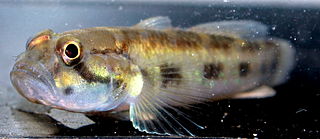 W
WAcentrogobius viridipunctatus, or the Spotted green goby, is a species of goby found in brackish and salt water in the lower Chao Phraya River. It is the type species of the genus Acentrogobius.
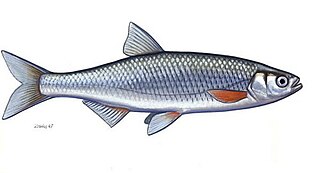 W
WAlburnus mento is a species of ray-finned fish in the genus Alburnus.
 W
WThe alpine bullhead or Siberian bullhead is a species of freshwater fish in the family Cottidae of sculpins. It is found in China, the Czech Republic, Denmark, Finland, Germany, North Korea, Moldova, Norway, Poland, Romania, Russia, Slovakia, Sweden, and Ukraine. This fish is listed as being of "Least Concern" by the IUCN.
 W
WAmblygobius phalaena, the Sleeper Banded goby, white-barred goby, is a species of goby native to tropical reefs of the western Pacific Ocean and through the central Indo-Pacific area at depths of from 2 to 20 metres. This species feeds by taking in mouthfuls of sand and sifting out algae, invertebrates and other organic matter. It can reach a length of 15 centimetres (5.9 in) TL. It is also of minor importance to local commercial fisheries and can also be found in the aquarium trade.
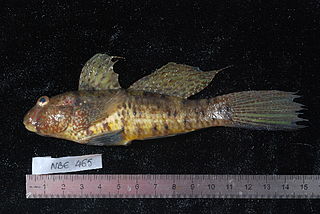 W
WAmblygobius sphynx or the Sphinx goby is a species of goby found in brackish and salt water in the Indo-West Pacific region.
 W
WAwaous flavus is a species of goby native to fresh and brackish waters of rivers and estuaries of South America from Colombia to near the mouth of the Amazon River in Brazil. Males of this species can reach a length of 8.2 centimetres (3.2 in) SL while females only reach 7.6 centimetres (3.0 in) SL.
 W
WCallionymus fasciatus, the banded dragonet, is a species of dragonet native to the Mediterranean Sea from the Gulf of Genoa to the western Aegean Sea. Also known from the southern and eastern Black Sea. It prefers sandy substrates where its diet consists of benthic invertebrates.
 W
WThe banded toadfish is a species of toadfish found along the Pacific coast of South America where it is found in Chile, Ecuador and Peru. This species grows to a length of 28 centimetres (11 in) TL. It is the only member of the monotypic genus Aphos. Unlike the other genus, Porichthys in this subfamily the banded toadfish lacks photophores.
 W
WThe Barred Mudskipper or Silverlined Mudskipper is a species of Mudskippers native to marine, fresh and brackish waters from the African coast of the Indian Ocean to the Marianas and Samoa in the western Pacific Ocean and from the Ryukyus south to Australia. This species occurs in Mangrove Forests and Nipa Palm stands and can cross surfaces of mud while out of the water. This species can reach a length of 19 centimetres (7.5 in) TL. It can also be found in the aquarium trade. Parasites of the Barred Mudskipper include Acanthocephalan larvae and the small Opecoelid Digenean parasite in the intestine and described from fish collected in New Caledonia.
 W
WThe frillfin goby is a species of marine fish in the genus Bathygobius.
 W
WBelobranchus belobranchus, the throat-spine gudgeon, is a species of fish in the family Eleotridae native to Indonesia, the Philippines, New Guinea, Timor-Leste, Solomon Islands, New Caledonia and Fiji where it can be found in fresh and brackish water in coastal streams and estuaries. This species grows to a length of 19.5 cm (7.7 in). This species was the only known member of its genus, until Belobranchus segura was described in 2012.
 W
WThe Bocon toadfish is a species of tropical toadfish in the family Batrachoididae found along the Caribbean-Atlantic Coast of Central and South America from Panama to Brazil in the sub-tidal zone. This species grows to a length of 40 cm (16 in). This species is of minor importance to commercial fisheries. It deposits its eggs on the shells of molluscs and on stones. It is one of the few marine species of fish in which the male guards its fry and juveniles. It feed mostly on molluscs and crustaceans. It is associated with coral and rocky reefsand has a depth range of 0–70 metres (0–230 ft) and is normally found on sandy or rocky sea beds, although it will also hide in caves and rock crevices.
 W
WButis humeralis, commonly known as the dark sleeper or olive flathead-gudgeon, is a fish native to the waters of Indonesia and Indochina. Found in salt, brackish and fresh water, it reaches a standard length of 14.2 cm. It closely resembles the crazy fish, but is more solid in build and never has two black spots at the base of its pectoral fins.
 W
WCallionymus curvicornis, the horn dragonet, is a species of dragonet native to the northwestern Pacific Ocean. This species grows to a length of 11.1 centimetres (4.4 in) SL.
 W
WCantherhines pardalis is a species of fish in the family Monacanthidae, the filefishes. Common names include honeycomb filefish, honeycomb leatherjacket, and wire-netting filefish. It is native to the Indian Ocean, the eastern Atlantic, and the western Pacific, except for the seas around Hawaii, where it is replaced by Cantherhines sandwichiensis.
 W
WColletteichthys dussumieri is a species of toadfish of the family Batrachoididae. The specific name honours the French explorer and trader Jean-Jacques Dussumier (1792-1883) who collected the type specimen.
 W
WCottus microstomus is a species of sculpin, a European freshwater fish in the family Cottidae. It is widespread in the Dniester drainage, Odra and Vistula drainages, most likely extending further east to the Gulf of Finland. It is part of the wider European Cottus gobio complex, and possibly makes hybrid zones with Cottus gobio and Cottus koshewnikowi. It is a demersal fish, up to 10.1 cm long.
 W
WDactylopus dactylopus, known commonly as the Fingered dragonet, is a species of marine fish in the family Callionymidae.
 W
WThe giant bully, tītarakura, or tīpokopoko (Māori), is a species of fish in the family Eleotridae endemic to New Zealand. This is the largest species of bully and it can reach more than 25 cm (10 in) in length, but most are 12–15 cm (4.7–5.9 in). Adults are generally found near the coast in freshwater, tidal or estuarine habitats. The breeding behavior is poorly known, but the species is considered diadromous and it is suspected that the larvae spend time in the sea.
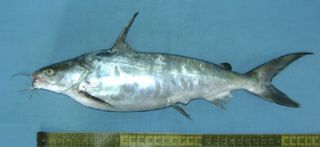 W
WThe giant catfish, also known as the giant sea catfish, giant salmon catfish, giant marine-catfish, or the khagga, is a species of catfish in the family Ariidae. It was described by Eduard Rüppell in 1837, originally under the genus Bagrus. It inhabits estuaries and occasionally freshwater bodies, in Japan, Australia, Polynesia, southern Vietnam in the Mekong Delta, the Red Sea and the northwestern Indian Ocean. It dwells at a depth range of 10 to 195 m. It reaches a maximum total length of 185 cm (73 in), but usually reaches a TL of 70 cm (28 in). It reaches a maximum weight of 1 kg (2.2 lb).
 W
WGiuris margaritacea, the snakehead gudgeon, Aporos sleeper, or ornate sleeper, is a species of fish in the family Eleotridae found in marine, brackish, and fresh waters from Madagascar to Melanesia. This species grows to a total length of 29 cm (11 in) with a maximum recorded weight of 171 g (6.0 oz). This species is important to the local peoples as a food fish. This species is the only known member of the genus Giuris.
 W
WBenthosema glaciale, or glacier lantern fish, is the most common species of lanternfish and important part of the midwater ecosystem of northern North Atlantic.
 W
WGobiodon histrio, the Broad-barred goby, is a species of goby native to the Indian Ocean from the Red Sea to the western Pacific Ocean to southern Japan, Samoa and the Great Barrier Reef. This species is a reef dweller, being found at depths of from 2 to 15 metres. It can reach a length of 3.5 centimetres (1.4 in) TL. This species can also be found in the aquarium trade.
 W
WU or u is the 21st and sixth-to-last letter of the ISO basic Latin alphabet and the fifth vowel letter of the modern English alphabet. Its name in English is u, plural ues.
 W
WThe great hammerhead is the largest species of hammerhead shark, belonging to the family Sphyrnidae, attaining an average length of 4.6 m (15 ft) and reaching a maximum length of 6.1 m (20 ft). It is found in tropical and warm temperate waters worldwide, inhabiting coastal areas and the continental shelf. The great hammerhead can be distinguished from other hammerheads by the shape of its "hammer", which is wide with an almost straight front margin, and by its tall, sickle-shaped first dorsal fin. A solitary, strong-swimming apex predator, the great hammerhead feeds on a wide variety of prey ranging from crustaceans and cephalopods, to bony fish, to smaller sharks. Observations of this species in the wild suggest that the cephalofoil functions to immobilize stingrays, a favored prey. This species has a viviparous mode of reproduction, bearing litters of up to 55 pups every two years.
 W
WHerklotsichthys punctatus, the spotback herring or spotted herring, is a species of herring from the family Clupeidae from the western Indian Ocean, the Red Sea and more recently the Levantine Sea in the eastern Mediterranean Sea by Lessepsian migration via the Suez Canal.
 W
WHerklotsichthys quadrimaculatus, also known as the bluestripe herring, is a species of ray-finned fish in the family Clupeidae. It is widespread in the Indian Ocean and the western Pacific Ocean. Other names for the species include goldspot sardine and fourspot herring. It can grow to a maximum standard length 25 cm (9.8 in), although its typical length is less than half of that.
 W
WHistiophryne bougainvilli, commonly known as the Smooth Anglerfish, is a frogfish found in the waters of Queensland, New South Wales, and Western Australia. There are an estimated 40 specimens known.
 W
WHypseleotris cyprinoides, the tropical carp-gudgeon or tropical bitterling-gudgeon, is a species of fish in the family Eleotridae found in fresh, brackish, and marine coastal waters from Africa through southern Asia to the Pacific Islands. This amphidromous species can reach a length of 8 cm (3.1 in). It has been extirpated from the Indian Ocean island of Réunion,
 W
WThe Isthmus goby is a species of goby native to marine and brackish waters of the Indian Ocean and the western Pacific Ocean where it can be found at depths of from 3 to 15 metres. This species lives on substrates consisting of a mix of sand and rubble. This species grows to a length of 10.2 centimetres (4.0 in) SL. This species is the only known member of its genus.
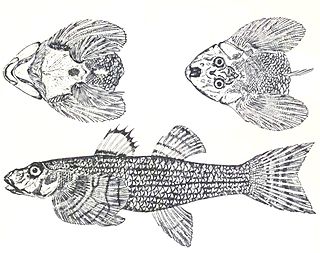 W
WThe loach goby, Rhyacichthys aspro, is a goby belonging to the family Rhyacichthyidae. It is not fished commercially.
 W
WThe longlure frogfish is a species of frogfish in the genus Antennarius found in the western Atlantic from Bermuda and the Bahamas, south along the coasts of Central and South America, to Brazil around warm shallow reefs with abundant sponge populations at depths less than 215 feet.
 W
WLophius americanus is a goosefish in the family Lophiidae, also called all-mouth, American anglerfish, bellows-fish, devil-fish, headfish, molligut, satchel-mouth, or wide-gape. It is native to the eastern coast of North America.
 W
WThe Macedonian vimba or Malamída is a European freshwater fish species in the family Cyprinidae.
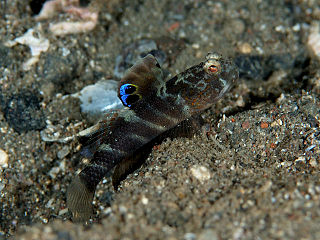 W
WMahidolia mystacina, the flagfin prawn goby, flagfin shrimpgoby or smiling goby, is a species of goby native to the Indian Ocean and the Pacific Ocean from Delagoa Bay, Mozambique to the Society Islands and from southern Japan to Samoa and northern Australia. This species occurs in marine and brackish waters, being found in coastal bays, estuaries and reef bases where the bottom is silty or muddy at depths of from 5 to 25 metres. This species is a commensal with a species of alpheid shrimp, using its burrow as its home. This species can reach a length of 8 centimetres (3.1 in) TL. This species can also be found in the aquarium trade. It is currently the only known member of its genus.
 W
WThe milk shark is a species of requiem shark, and part of the family Carcharhinidae, whose common name comes from an Indian belief that consumption of its meat promotes lactation. The largest and most widely distributed member of its genus, the milk shark typically measures 1.1 m (3.6 ft) long, and can be found in coastal tropical waters throughout the eastern Atlantic and the Indo-Pacific regions. Occurring from the surface to a depth of 200 m (660 ft), this species is common near beaches and in estuaries, and has been recorded swimming up rivers in Cambodia. Juveniles are known to inhabit tidal pools and seagrass meadows. The milk shark has a slender body with a long, pointed snout and large eyes, and is a nondescript gray above and white below. This shark can be distinguished from similar species in its range by the long furrows at the corners of its mouth, and seven to 15 enlarged pores just above them.
 W
WNarrow-snouted pipefish is a pipefish species which inhabits the Mediterranean basin: Adriatic Sea, Tyrrhenian Sea, and Black Sea. It is a marine demersal fish with an ovoviviparous breeding pattern.
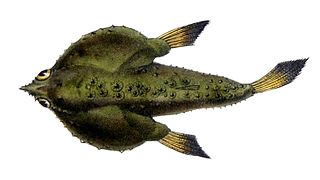 W
WOgcocephalus notatus, the oval batfish, is a species of batfish in the family Ogcocephalidae. It is found in the tropical western Atlantic Ocean.
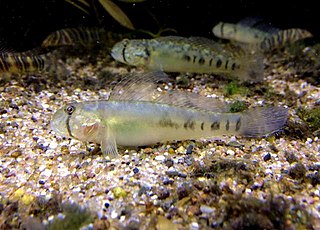 W
WOligolepis acutipennis, the Sharptail goby, is a species of goby native to marine, freshwater and brackish waters along the coasts of Indo-West Pacific region. This species can reach a length of 12 centimetres (4.7 in) TL.
 W
WOplopomus oplopomus, commonly known as the spinecheek goby, is a species of goby native to the Indo-Pacific region. They can grow to a maximum length of 10 centimetres (3.9 in). They inhabit coral reefs.
 W
WPriolepis semidoliata, the half-barred goby, is a species of goby native to the Indo-Pacific region.
 W
WProchilodus lineatus, the streaked prochilod, is a species of ray-finned fish in the family Prochilodontidae. It is native to the Paraná—Paraguay and Paraíba do Sul river basins in South America. It performs long breeding migrations and supports very important fisheries.
 W
WThe Punctuated snake-eel is an eel in the family Ophichthidae. It was described by Achille Valenciennes in 1837, originally under the genus Ophisurus. It is a marine, subtropical eel which is known from the eastern central and southeastern Pacific Ocean, including Nicaragua, Chile, Colombia, Costa Rica, Ecuador, Peru, and Panama. It dwells at a depth range of 15 to 277 metres, and inhabits sand and mud sediments. Males can reach a maximum total length of 85 centimetres (33 in), but more commonly reach a TL of 60 centimetres (24 in).
 W
WPomatoschistus quagga, the Quagga goby, is a species of goby native to the western part of the Mediterranean Sea and the Adriatic Sea. It occurs above soft substrates and in beds of eelgrass. This species can reach a length of 6 centimetres (2.4 in) TL.
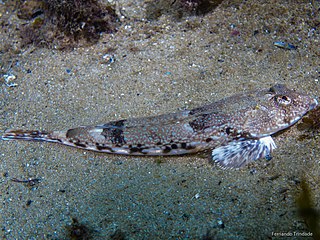 W
WCallionymus reticulatus, the reticulated dragonet, is a species of dragonet native to the northeastern Atlantic Ocean and the Mediterranean Sea where it is found at depths of from 0 to 110 metres. This species grows to a length of 11 centimetres (4.3 in) TL. This species has a flattened head and body, the head has a triangular shape with the eyes placed on the top of the head. It has two dorsal fins with the first one being triangular in shape. It has blue spots along the flanks and four saddle-like markings on their backs which have sharply defined outlines. It is similar to the common dragonet but is distinguished by its smaller size and the sharply defined border around the saddle markings on the back.
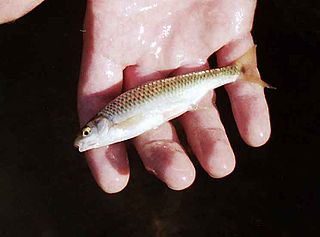 W
WSarmarutilus rubilio, known as the rovella or the South European roach, is a species of freshwater fish in the family Cyprinidae. It is native in the Tuscano-Latium district of Italy, both in waters draining to the Adriatic and Tyrrhenian Seas, and introduced further south in the country. Its natural habitats are rivers and freshwater lakes. It is threatened by introduced species and habitat loss.
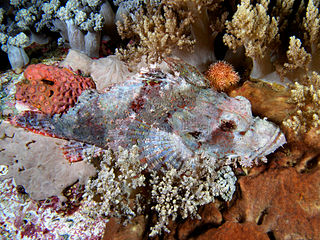 W
WScorpaenopsis neglecta, the yellowfin scorpionfish, is a scorpionfish from the Indo-West Pacific. The species is commonly found on the continental shelf and can grow up to a length of 190 mm (7.5 in).
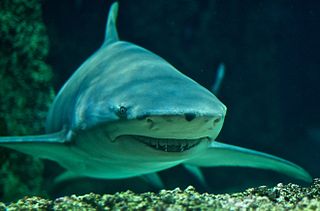 W
WThe sicklefin lemon shark or sharptooth lemon shark, is a species of requiem shark belonging to the family Carcharhinidae, widely distributed in the tropical waters of the Indo-Pacific. It is closely related to the better-known lemon shark of the Americas; the two species are almost identical in appearance, both being stout-bodied sharks with broad heads, two dorsal fins of nearly equal size, and a plain yellow-tinged coloration. As its common name suggests, the sicklefin lemon shark differs from its American counterpart in having more falcate (sickle-shaped) fins. This large species grows up to 3.8 m (12 ft) long. It generally inhabits water less than 92 m (302 ft) deep in a variety of habitats, from mangrove estuaries to coral reefs.
 W
WThe silvertip shark is a large species of requiem shark, in the family Carcharhinidae, with a fragmented distribution throughout the tropical Indian and Pacific Oceans. It is often encountered around offshore islands and coral reefs, and has been known to dive to a depth of 800 m (2,600 ft). The silvertip shark resembles a larger and bulkier grey reef shark, but can be easily identified by the prominent white margins on its fins. It attains a maximum length of 3 m (10 ft).
 W
WThe sleepy goby is a species of fish in the family Gobiidae.
 W
WThe slender goby is a species of goby endemic to the Mediterranean Sea where it can be found in inshore waters to a depth of about 30 metres (98 ft). It lives in areas with sandy or muddy substrates near beds of sea-grass. This species can reach a length of 16 centimetres (6.3 in) TL.
 W
WThe South American lungfish is the single species of lungfish found in swamps and slow-moving waters of the Amazon, Paraguay, and lower Paraná River basins in South America. Notable as an obligate air-breather, it is the sole member of its family Lepidosirenidae. Relatively little is known about the South American lungfish. Additional common names include American mud-fish and scaly salamanderfish. In Brazil, it is known by the indigenous language Tupi name piramboia, which means "snake-fish", and synonyms pirarucu-bóia, traíra-bóia, and caramuru.
 W
WThe South-west European nase is a species of cyprinid fish that is found in France and Spain. Its natural habitats are rivers and water storage areas.
 W
WSqualius squalus, commonly known as the Italian chub, or the Chubius Chub or Cavedano, is a species of freshwater fish in the carp family Cyprinidae. It is native to southeastern Europe being found in Italy, Switzerland and the former Yugoslavia.
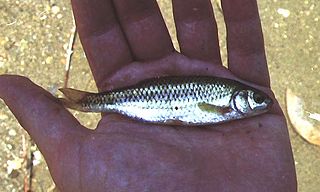 W
WTelestes muticellus is a species of ray-finned fish in the family Cyprinidae. Commonly known as vairone, it is found in France, Italy, and Switzerland.
 W
WTrachidermus fasciatus is a species of fish in the superfamily Cottoidea, the sculpins, and the only member of the monotypic genus Trachidermus. Its common name is roughskin sculpin. It has also been called four-gilled perch. It is native to the coastlines of China, Japan, and Korea, where it occurs at the mouths of rivers.
 W
WTylosurus choram, the Red Sea houndfish, is a species of needlefish from the family Belonidae. A marine fish bluish in color with a long slender body, and a pointed long toothed beak, found in most temperate, warm seas, and sometimes rivers, It's found in abundance in the Red Sea. It is a fast predator swimming in small schools near the water surface. Like other species of needlefish this species is oviparous, laying eggs which attach themselves to objects in the water by means of filaments which cover the outer layer of the egg. Tylosurus choram is found in the Red Sea and the coasts around the Arabian Peninsula to the Gulf of Oman, it also occurs in the eastern Mediterranean Sea having colonised that sea via the Suez Canal, a Lessepsian migration. This species was described as Belone choram by Eduard Rüppell in 1837 with the type locality given as the Red Sea, the specific name choram is Arabic for needlefish.
 W
WValencienna sexguttata, the chalk goby, sixspot goby,sleeper blue dot goby, is a species of goby native to the Indian Ocean and the western Pacific Ocean. It inhabits bays or lagoons in waters of from 3 to 25 metres with silt or sand substrates with larger pieces of rock under which to burrow. This species can reach a length of 14 centimetres (5.5 in) TL. It can also be found in the aquarium trade.
 W
WThe western tubenose goby is a species of goby native to fresh waters of the Black Sea and Aegean Sea basins,. It has recently spread as an invasive species to Central and Western Europe and to North America. Previously Proterorhinus semilunaris was considered as a junior synonym of Proterorhinus marmoratus, but was confirmed as a distinct species based on molecular analysis.
 W
WThe whitetip reef shark is a species of requiem shark, in the family Carcharhinidae, and the only member of its genus. A small shark that does not usually exceed 1.6 m (5.2 ft) in length, this species is easily recognizable by its slender body and short but broad head, as well as tubular skin flaps beside the nostrils, oval eyes with vertical pupils, and white-tipped dorsal and caudal fins. One of the most common sharks found on Indo-Pacific coral reefs, the whitetip reef shark occurs as far west as South Africa and as far east as Central America. It is typically found on or near the bottom in clear water, at a depth of 8–40 m (26–131 ft).